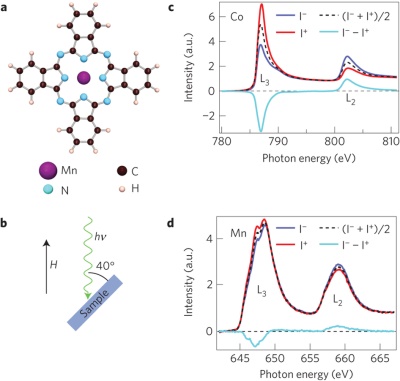Molecular semiconductors may exhibit antiferromagnetic correlations well below room temperature. Although inorganic antiferromagnetic layers may exchange bias single-molecule magnets, the reciprocal effect of an antiferromagnetic molecular layer magnetically pinning an inorganic ferromagnetic layer through exchange bias has so far not been observed. We report on the magnetic interplay, extending beyond the interface, between a cobalt ferromagnetic layer and a paramagnetic organic manganese phthalocyanine (MnPc) layer. These ferromagnetic/organic interfaces are called spinterfaces because spin polarization arises on them. The robust magnetism of the Co/MnPc spinterface^stabilizes antiferromagnetic ordering at room temperature within subsequent MnPc monolayers away from the interface. The inferred magnetic coupling strength is much larger than that found in similar bulk, thin or ultrathin systems. In addition, at lower temperature, the antiferromagnetic MnPc layer induces an exchange bias on the Co film, which is magnetically pinned. These findings create new routes towards designing organic spintronic devices.
|
|
|
Home Help About Archive |
|
|
xxxx |
EXCHANGE BIAS AND ROOM-TEMPERATURE MAGNETIC ORDER IN MOLECULAR LAYSERSGERSON PESSOTOTuesday, October 20, 2015 |




